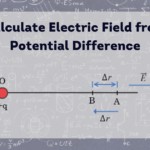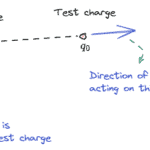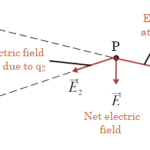Let us first understand how we visualize the electric field around an electrically charged particle, then we will cover the properties of electric field lines. And at last, we will guide you on how to draw electric field lines.
Visualizing electric field
The electric field is an imaginary physical field that surrounds an electrically charged particle. In this field, the charged particles exert electromagnetic force on all the other charged particles, either attracting or repelling them.
The electric field is a representation of the combined electromagnetic force exerted by the system of charges.
The electric field is defined at each point in space as the force per unit electric charge that would be experienced by a test charge if held at that point.
As the electric field is defined in terms of force per unit charge; it follows that an electric field is a vector quantity i.e. having both magnitude and direction.
The derived SI units for the electric field are volts per meter (V/m), which is equivalent to Newton per Coulomb (N/C).
Vector Fields
The directional component of an electrical field is visualized with the help of a specialized vector field called electric field lines.
A vector field in the plane can be visualized as a collector of individual vectors attached to each point in the plane. Electric field lines are a type of vector field for visualizing electric fields.
What are electric field lines?
Electrical field lines, in an electrical field, are imaginary lines, the tangent to which at any point, give the direction of the electric field intensity.
The concept of electric field lines was introduced by Michael Faraday.
What are the properties of the electric field lines?
- Electric field lines are imaginary in nature
- Electric field lines always start from positive charge or at the infinity.
- Electric field lines always terminate on negative charge or at the infinity.
- The electric field lines always flow from higher electric potential to lower electric potential.
- As the electrical force is conservative, the electric field lines never form closed loops. Therefore, they can never start and end on the same point charge.
- The number of electric field lines originating from a positive charge and terminating on a negative charge are proportional to the magnitude of their charge.
- The electric field lines are straight, parallel and uniformly spaced in an uniform electric field.
- Magnitude of electric field is represented by density of electric field lines i.e. more the concentration of electrical field lines more will be the electric field intensity at that point.
- Two electric field lines never intersect each other, if they do, there will be two vectors depicting two directions of the same electric field which is not possible.
- If the electric field in a given region is zero, then electric field lines do not exist.
- The tangent to an electric field line at any point gives the direction of the electric field at the point. Also, this is the path on which a positive test charge will tend to move if free to do so.
- Electric field lines can pass through an insulator.
- Electric field lines cannot pass through a conductor.
- Electric field lines exert lateral pressure on each other
How to draw the electric field lines?
For a single charge system
Check the charge: positive or negative
For a single positive charge system,
- The electric field lines should originate from the charge and diverge out to the infinity.
- Make sure that the field lines don’t interest each other.
- Draw the concentration of field lines proportional to the magnitude of charge.
For a single negative charge system,
- The electric field lines should terminate onto the negative charge from infinity.
- Make sure that the field lines don’t interest each other.
- Draw the concentration of field lines proportional to the magnitude of charge.
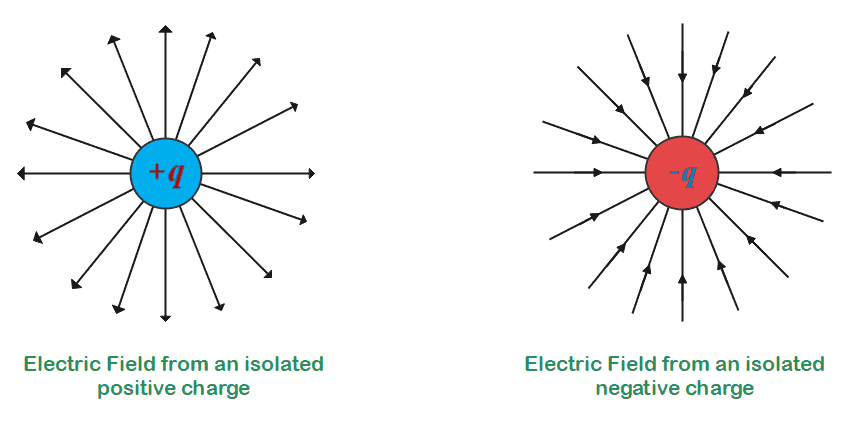
For a multi-charge system
- Identify positive and negative charges. The electric field lines should originate from the positive charge and terminate on the negative charge.
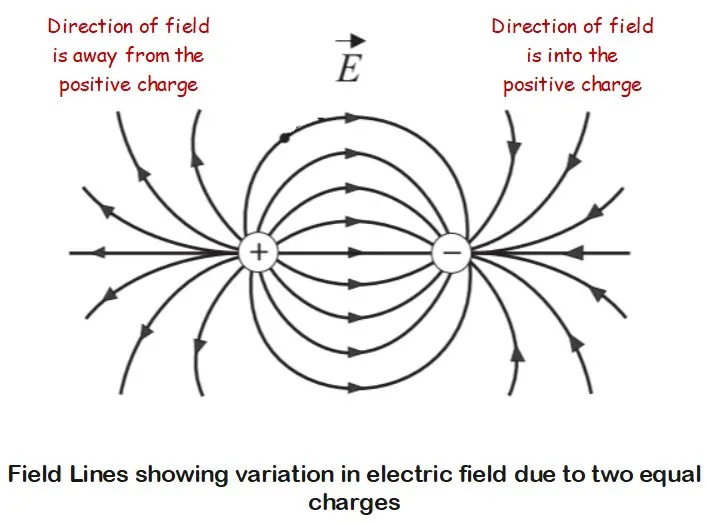
- Draw the density of the electric field lines proportional to the magnitude of their charge. For example A +3 microcoulomb charge should have more electric field line density than a +1 microcoulomb charge.
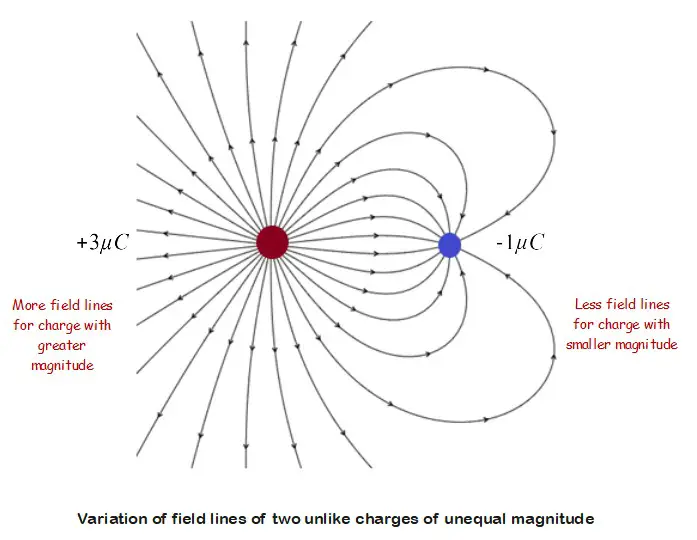
- Electric field lines should be closer together near the charge and farther apart away from the charge.
- This is because the electric field is greatest at locations closest to the surface of the charge and least at locations further from the surface of the charge
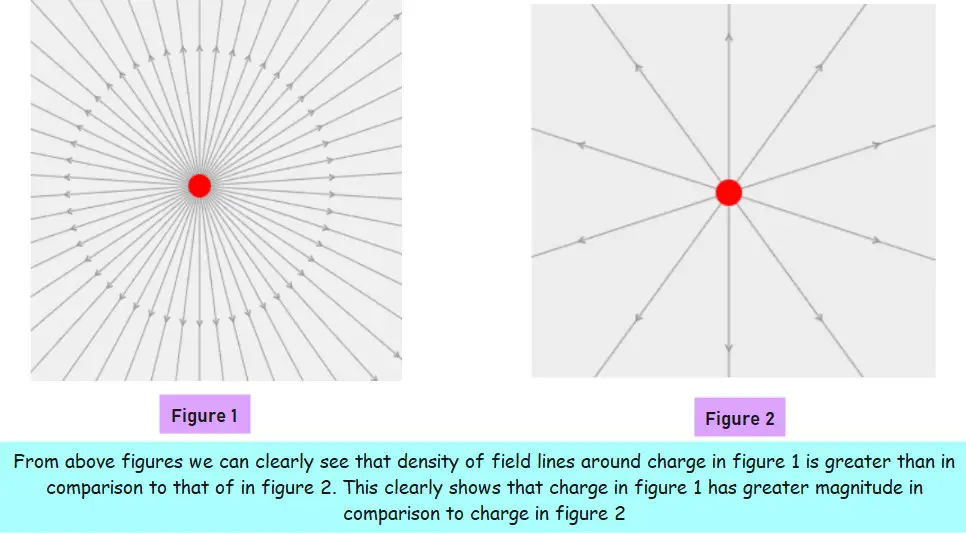
- Make sure that the electric field lines do not intersect each other.
Related Articles



